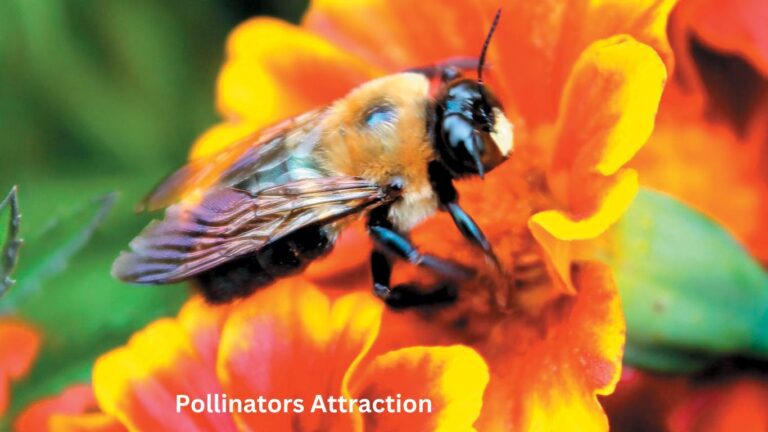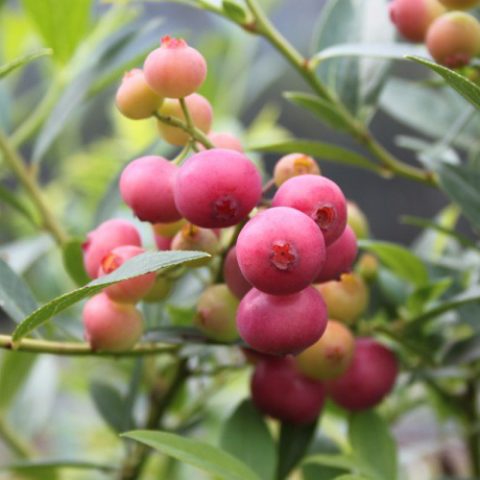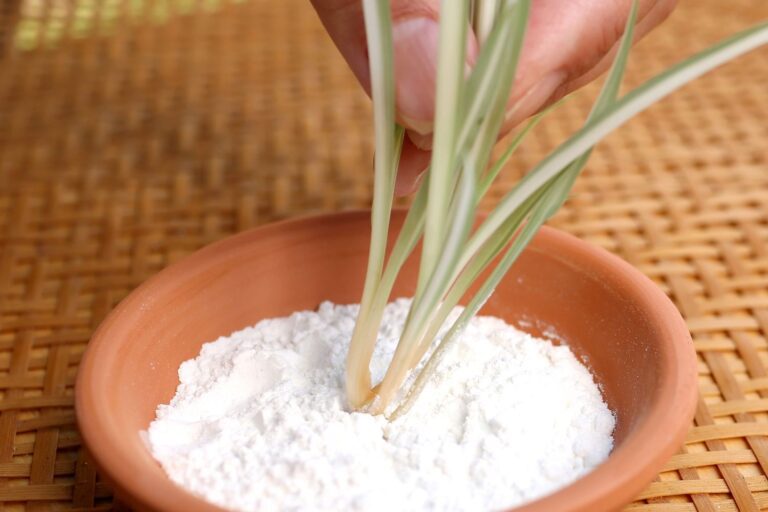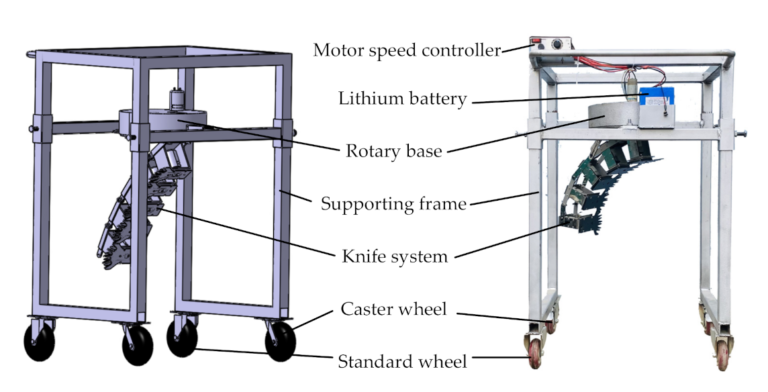Tilling vs. No-Till Gardening: Weighing the Options
Table of Contents
Understanding Different Gardening Techniques
Gardening is a diverse and rewarding hobby that encompasses many different techniques. Understanding these techniques is crucial for gardeners to effectively cultivate their plants and create a thriving garden. By exploring the various gardening techniques available, gardeners can choose the method that best suits their needs and goals.
One popular technique that many gardeners employ is traditional gardening, which involves tilling the soil before planting. Tilling is the process of breaking up the soil, typically with a tiller or garden fork, to create a loose and aerated environment for plant roots. This technique allows for improved water drainage, enhanced nutrient absorption, and better overall plant growth. Additionally, tilling can help control weeds and pests by disrupting their habitat and reducing their populations. Traditional gardening techniques like tilling have been used for centuries and are a tried-and-true method for successful plant cultivation.
The Benefits of Tilling in Gardening
Tilling is a common gardening technique that involves turning and loosening the soil in preparation for planting. This method has been used for centuries and offers several benefits for gardeners. One of the primary advantages of tilling is that it helps to improve soil structure. By breaking up compacted soil, tilling allows for better root penetration and water absorption, leading to healthier plants with stronger root systems. Additionally, tilling helps to incorporate organic matter, such as compost or manure, into the soil, which enriches its nutrient content and enhances overall fertility. This means that tilling can contribute to higher yields and healthier crops in the long run.
Another notable benefit of tilling is that it helps to control weeds. When the soil is loosened, weed seeds are brought to the surface, where they can be easily removed. Tilling also disrupts the growth of existing weeds by cutting their roots and burying them deeper into the soil. This reduces competition for water and nutrients, allowing cultivated plants to thrive. Moreover, tilling can help to manage pests and diseases. By uprooting and burying plant debris, tilling removes potential breeding grounds for pests and pathogens, reducing the risk of infestations and diseases in the garden.
Overall, tilling provides gardeners with improved soil structure, better nutrient availability, weed control, and pest management benefits. This traditional gardening technique has been widely adopted by gardeners around the world for its proven effectiveness. However, it’s important to weigh these benefits against the potential drawbacks and consider alternative methods like no-till gardening, which focuses on preserving soil health and minimizing soil disturbance. By exploring the advantages and disadvantages of different gardening techniques, gardeners can make informed decisions that best suit their specific circumstances and goals.

Exploring the Advantages of No-Till Gardening
No-till gardening is gaining popularity among gardening enthusiasts for its numerous advantages and benefits. One of the key advantages of no-till gardening is the reduction in soil erosion. By leaving the soil undisturbed and keeping it covered with organic matter, the risk of erosion caused by wind and water is significantly minimized. This not only helps to preserve the valuable topsoil but also reduces the impact on nearby waterways by preventing sediment runoff.
Another advantage of no-till gardening is the improvement in soil structure and fertility. When the soil is left undisturbed, beneficial organisms such as earthworms and microorganisms thrive, creating a healthy and vibrant soil ecosystem. These organisms help to break down organic matter, release essential nutrients, and improve soil structure. As a result, the soil becomes more fertile and capable of supporting healthy plant growth. Additionally, the increased organic matter in no-till gardens helps to retain moisture, reducing the need for frequent watering and conserving water resources.
In conclusion, no-till gardening offers several advantages, including reduced soil erosion and improved soil fertility. By adopting this technique, gardeners can not only protect the environment but also enjoy the benefits of healthier plants and reduced maintenance. Whether you have a small backyard garden or a large-scale operation, considering the advantages of no-till gardening is definitely worth exploring.
Comparing the Environmental Impacts of Tilling and No-Till Gardening
Tilling and no-till gardening are two common techniques used in gardening, each with its own set of environmental impacts. When it comes to tilling, one of the main concerns is soil erosion. The process of tilling involves breaking up the soil, which can lead to increased runoff of topsoil, especially in sloped areas. This can result in the loss of valuable nutrients and organic matter, as well as the degradation of water quality in nearby streams and rivers. Additionally, tilling disrupts the natural ecosystem of the soil, disturbing beneficial microorganisms and earthworms that play a vital role in maintaining soil health.
On the other hand, no-till gardening has been praised for its positive impact on soil conservation. By leaving the soil undisturbed, it allows for the development of a stable soil structure and encourages the formation of soil aggregates, which help to prevent erosion. Moreover, the practice of keeping plant residues on the soil surface helps to improve moisture retention, reduce evaporation, and promote overall water conservation. Additionally, no-till gardening promotes the growth of beneficial microorganisms, allowing for a healthier and more balanced soil ecosystem.
Assessing Soil Health and Fertility in Tilled Gardens
When it comes to assessing soil health and fertility in tilled gardens, there are a few key factors to consider. Firstly, the organic matter content of the soil plays a crucial role in determining its fertility. Tilling can break down organic matter more quickly, leading to a decrease in soil fertility over time. This is especially true if tilling is done too frequently or at inappropriate depths. It is important to regularly monitor the organic matter levels in tilled gardens to ensure that the soil remains fertile and healthy.
Another aspect to consider when assessing tilled garden soil is its structure. Tilling can disrupt the soil structure, leading to the breakdown of soil aggregates and the loss of pore spaces. Poor soil structure can impede root growth and water infiltration, negatively affecting plant health and productivity. Regular soil testing and visual inspections can help identify any issues with soil structure in tilled gardens, allowing for timely interventions such as adding organic amendments or employing conservation practices to improve soil health.
In conclusion, while tilling can have certain benefits in terms of soil aeration and weed control, it is important to carefully assess soil health and fertility in tilled gardens. Monitoring organic matter content and soil structure, as well as taking appropriate measures to maintain soil fertility and structure, are essential for successful gardening endeavors. By understanding and addressing these factors, gardeners can ensure that their tilled gardens thrive and produce bountiful harvests.

Examining Soil Health and Fertility in No-Till Gardens
Soil health and fertility are crucial factors to consider in any garden, and this holds true for no-till gardening as well. No-till gardening involves leaving the soil undisturbed, which can have a significant impact on the overall health and fertility of the soil.
When practicing no-till gardening, organic matter and nutrients gradually build up in the soil. The absence of tilling allows for the development of a complex soil structure, which promotes a healthy soil ecosystem. This structure is characterized by the presence of beneficial microorganisms, earthworms, and other soil-dwelling creatures that contribute to nutrient cycling and aeration.
In addition, the build-up of organic matter in no-till gardens improves soil fertility. Organic matter acts as a natural fertilizer, releasing nutrients slowly into the soil and supporting plant growth. The increase in organic matter also enhances water-holding capacity, reducing the need for irrigation and minimizing water loss through drainage. Overall, examining soil health and fertility in no-till gardens reveals a positive correlation, highlighting the beneficial impact of this gardening technique on the overall well-being of the soil.
The Impact of Tilling on Weed Control
Tilling is a well-known technique in gardening that is often used to control weeds. By disturbing the soil and uprooting weeds, tilling can effectively reduce weed competition and provide a clean slate for planting. The physical disruption and burial of weed seeds during tilling prevents them from germinating and growing, resulting in fewer weeds in the garden.
One of the main advantages of tilling for weed control is its immediate impact. Tilling can quickly uproot existing weeds, making it easier to maintain a weed-free garden. This can be particularly beneficial in the initial stages of establishing a garden or when dealing with heavy weed infestations. Additionally, tilling can create a loose, aerated soil structure that allows for better water and nutrient absorption by desired plants, further enhancing their growth and outcompeting weeds.
However, it is important to note that tilling is not without its drawbacks. While it can be effective in controlling weeds initially, tilling can also disturb the soil’s natural balance and disrupt the ecosystem. It can disturb beneficial soil organisms and break apart soil aggregates, leading to potential erosion and nutrient leaching. Furthermore, the exposure of bare soil during tilling can expose dormant weed seeds to light and trigger their germination, potentially leading to a new wave of weed growth. In the next section, we will discuss an alternative gardening technique that aims to overcome these challenges: no-till gardening.
Controlling Weeds in No-Till Gardens
Weed control is an essential aspect of maintaining a healthy and thriving garden, and this holds true for both tilled and no-till gardens. In the case of no-till gardening, the approach to weed control differs slightly from traditional methods. Without the disruption of soil through tilling, weed seeds can remain dormant in the top layer of the soil, ready to germinate when conditions are favorable.
To effectively control weeds in no-till gardens, it is important to implement a proactive approach. One of the key strategies is to use mulch, such as straw, wood chips, or leaf litter, to suppress weed growth. By laying down a layer of organic mulch around plants and between rows, weed seeds are deprived of sunlight, hindering their ability to germinate and grow. Additionally, the organic mulch breaks down over time, contributing to soil health and fertility.
Another effective method of weed control in no-till gardens is the use of cover crops. Cover crops are planted in between growing seasons and help to suppress weeds by outcompeting them for nutrients, sunlight, and water. The dense growth of cover crops also acts as a physical barrier, preventing weed seeds from reaching the soil surface and germinating. Furthermore, cover crops can be mowed or cut back before they go to seed, minimizing the potential for future weed problems.
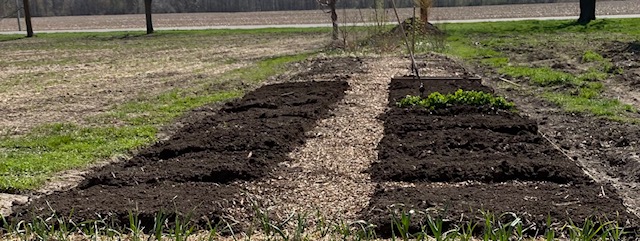
Managing Pests and Diseases in Tilled Gardens
Pests and diseases can be a significant challenge for gardeners who choose to till their gardens. Tilling can disrupt the natural ecosystem and expose previously hidden pests and diseases to sunlight and oxygen, allowing them to thrive. Additionally, the disturbance caused by tilling can disrupt beneficial organisms in the soil that help control pests and diseases naturally.
One common pest that can be a problem in tilled gardens is the cutworm. These pests can quickly devour young plants, leading to stunted growth or even death. Tilling can actually help cutworm populations increase by disturbing the soil and exposing their eggs to favorable conditions. Similarly, tilling can also expose overwintering pest larvae and eggs, giving them the perfect opportunity to infest newly tilled areas. Therefore, it is crucial for gardeners to be vigilant and monitor their tilled gardens regularly for signs of pest and disease infestations.
In order to manage pests and diseases in tilled gardens, gardeners should consider implementing a combination of preventive and control measures. These measures may include practicing crop rotation, using resistant plant varieties, and applying organic or synthetic pesticides as a last resort. Additionally, regular scouting and monitoring are essential to detect pest and disease populations early, allowing for prompt action. By employing these strategies, gardeners can effectively manage pests and diseases in tilled gardens and ensure the health and productivity of their plants.
Certainly! Here’s a table highlighting the benefits of no-till gardening:
| Benefit | Description |
|---|---|
| 1. Time Savings | No-till gardening saves you time and effort. Unlike traditional tilling, which involves heavy-duty equipment and weeks of labor, no-till gardening eliminates the need for extensive soil disruption. You won’t spend hours tilling down 6 to 8 inches of land at a time. |
| 2. Reduced Labor | With no-till gardening, there’s no digging or turning of the soil. You’ll save physical effort, especially during the initial garden preparation phase. Gathering materials for mulching and applying mulch during the growing season are the primary tasks, but they are less labor-intensive than tilling. |
| 3. Soil Health | Over time, the fertility of your soil improves dramatically in a no-till garden. By layering organic components like compost and animal fertilizers, you create a nutrient-rich base for planting. The soil structure remains intact, preventing erosion and nutrient depletion. |
| 4. Nature-Inspired Approach | No-till gardening aligns with nature’s design. In natural ecosystems, there’s no tilling or artificial fertilization. By mimicking these processes, you create a sustainable and thriving garden. |
Remember, patience and persistence pay off in the long run when developing good soil through no-till gardening.
Pest and Disease Management in No-Till Gardens
Pest and disease management in no-till gardens presents a unique set of challenges and opportunities for gardeners. Without the disturbance caused by tilling, the soil structure remains intact, creating a more stable and balanced ecosystem. However, this can also mean that pests and diseases may have a better chance of establishing themselves in the garden.
One key aspect of effective pest and disease management in no-till gardens is prevention. By implementing proper crop rotation and diversifying plant species, gardeners can reduce the risk of specific pests and diseases gaining a foothold. Additionally, companion planting, where beneficial plants are grown alongside susceptible ones, can deter pests and attract natural predators, providing a natural form of pest control. Regularly inspecting plants for any signs of pests or diseases is essential in order to catch and address any issues early on. By staying vigilant and taking preemptive measures, gardeners can go a long way in minimizing the impact of pests and diseases in their no-till gardens.
[Table: Examples of Companion Plants for Pest Control in No-Till Gardens]
Companion Plant Pest Controlled
Marigolds Aphids, nematodes
Basil Mosquitoes, flies
Dill Caterpillars, squash bugs
Nasturtium Aphids, whiteflies
Chives Japanese beetles, carrot rust fly
As with any gardening method, it’s important to note that no-till gardens may still require the use of pesticides and fungicides in certain situations. However, by adopting a holistic and integrated approach to pest and disease management, gardeners can minimize their reliance on chemical interventions and create a healthier, more sustainable garden environment. The key is to strike a balance between preserving the principles of no-till gardening while effectively protecting plants from potential harm. By staying informed and adapting to the specific needs of their garden, gardeners can successfully manage pests and diseases in their no-till gardens.
Water Conservation in Tilled Gardens
Water conservation is an essential aspect of gardening, particularly in tilled gardens where water usage can have a significant impact. Tilling soil, although beneficial in some ways, can lead to increased water evaporation and runoff. This means that more water may be required to maintain adequate moisture levels in the soil, especially during dry periods.
One way to conserve water in tilled gardens is through mulching. Applying a layer of organic mulch, such as wood chips or straw, helps to retain moisture in the soil by reducing evaporation. The mulch acts as a barrier, preventing direct contact between the soil and the sun’s rays. This not only helps to maintain soil moisture but also regulates soil temperature, reducing the need for excessive watering.
Additionally, efficient watering techniques can contribute to water conservation in tilled gardens. Drip irrigation systems, for example, deliver water directly to the roots, minimizing water loss through evaporation and runoff. These systems can be precisely controlled to provide the right amount of water needed by plants, thus avoiding overwatering and unnecessary waste.
Overall, implementing mulching practices and efficient watering techniques can significantly contribute to water conservation in tilled gardens. By reducing water evaporation and runoff, gardeners can ensure optimal moisture levels for plant growth while also being mindful of their environmental impact.
Water Conservation in No-Till Gardens
No-till gardening is a sustainable gardening technique that emphasizes water conservation. Unlike traditional tilling methods, which disturb the soil and can lead to water loss through evaporation, no-till gardens maintain a protective layer of organic matter on the soil surface. This layer acts as a natural mulch, reducing water evaporation and keeping the soil moist for longer periods. In fact, studies have shown that no-till gardens can reduce water consumption by up to 50% compared to conventional tilled gardens.
Furthermore, the deep root systems of plants in no-till gardens contribute to increased water infiltration and retention in the soil. The roots create channels that allow water to penetrate deeper into the ground, preventing runoff and promoting better water distribution to the plants’ roots. This not only helps to conserve water but also ensures that plants have access to the moisture they need for optimal growth and development. By implementing no-till gardening techniques, gardeners can effectively conserve water while still enjoying a flourishing garden.

The Time and Effort Required for Tilling
Tilling, a common gardening technique, involves breaking up compacted soil and mixing organic matter in order to create a suitable environment for plant growth. While tilling can be an effective way to prepare the soil for planting, it does require a significant amount of time and effort.
To begin with, tilling usually requires the use of a tiller or a garden fork, both of which can be heavy and cumbersome to maneuver. The process of tilling typically involves overturning the soil, which can be physically demanding, especially if you have a large garden or a challenging terrain. In addition, tilling requires careful timing, as the soil should be neither too wet nor too dry for optimal tilling. This means that gardeners may need to wait for the right conditions before they can begin tilling, adding to the time and effort involved in this technique.
The Time and Effort Required for No-Till Gardening
No-till gardening offers a significant advantage when it comes to the time and effort required to maintain a garden. Unlike traditional gardening methods that involve tilling the soil, which can be a labor-intensive and time-consuming process, no-till gardening eliminates the need for this tedious task. By leaving the soil undisturbed, gardeners can save valuable time and energy, allowing them to focus on other aspects of their garden.
Additionally, no-till gardening also requires less ongoing maintenance compared to tilled gardens. With tilled gardens, regular tilling is often necessary to control weeds, loosen compacted soil, and incorporate amendments. This can be a time-consuming chore, especially for larger gardens. In contrast, no-till gardening minimizes the need for weed control and soil maintenance, as the soil structure remains intact and naturally nurtures beneficial organisms that help suppress weeds. This means less time spent on weeding, hoeing, and other routine maintenance tasks, giving gardeners more leisure time to enjoy the fruits of their labor.
Certainly! Here’s a table highlighting the benefits of no-till gardening:
| Benefit | Description |
|---|---|
| 1. Time Savings | No-till gardening saves you time and effort. Unlike traditional tilling, which involves heavy-duty equipment and weeks of labor, no-till gardening eliminates the need for extensive soil disruption. You won’t spend hours tilling down 6 to 8 inches of land at a time. |
| 2. Reduced Labor | With no-till gardening, there’s no digging or turning of the soil. You’ll save physical effort, especially during the initial garden preparation phase. Gathering materials for mulching and applying mulch during the growing season are the primary tasks, but they are less labor-intensive than tilling. |
| 3. Soil Health | Over time, the fertility of your soil improves dramatically in a no-till garden. By layering organic components like compost and animal fertilizers, you create a nutrient-rich base for planting. The soil structure remains intact, preventing erosion and nutrient depletion. |
| 4. Nature-Inspired Approach | No-till gardening aligns with nature’s design. In natural ecosystems, there’s no tilling or artificial fertilization. By mimicking these processes, you create a sustainable and thriving garden. |
Remember, patience and persistence pay off in the long run when developing good soil through no-till gardening.
Considering the Costs of Tilling
Tilling has long been a common practice in traditional gardening, but it’s important to consider the costs associated with this technique. One of the main costs of tilling is the time and effort required to properly prepare the soil. Tilling involves breaking up the soil, removing weeds and debris, and incorporating organic matter. This process can be labor-intensive, especially for larger garden areas. It may require the use of heavy machinery, such as a tiller or plow, which can add to the overall cost.
Additionally, tilling can have negative effects on soil health and fertility, leading to further costs in the long run. When soil is tilled, it disrupts the natural soil structure and can result in the loss of beneficial organic matter and soil organisms. This can lead to decreased nutrient availability and water-holding capacity, requiring gardeners to invest in additional amendments and fertilizers to sustain plant growth. Furthermore, repeated tilling can contribute to soil erosion and compaction, which may necessitate costly measures to prevent erosion and improve soil structure. Taking these costs into account, it’s important for gardeners to weigh the benefits of tilling against the potential expenses involved.
Weighing the Costs of No-Till Gardening
No-till gardening has gained popularity in recent years due to its numerous benefits, including reduced labor and equipment costs. By eliminating the need to till the soil, gardeners can save time and energy that would otherwise be spent on this labor-intensive task. Instead, they can focus their attention on tasks such as planting, mulching, and maintaining the garden. Additionally, the use of heavy tilling equipment is avoided, which can lead to savings in terms of fuel consumption and maintenance expenses.
Another cost-saving advantage of no-till gardening is the reduced need for herbicides and pesticides. When soil is tilled, it disrupts the natural ecosystem and can bring dormant weed seeds to the surface, leading to increased weed growth. In contrast, no-till gardening helps to maintain the natural balance of microorganisms and beneficial insects in the soil, which can help suppress weed growth and reduce the need for chemical interventions. This not only saves money on herbicides and pesticides but also aligns with the goal of creating a more sustainable and environmentally friendly garden.
For more information watch the below video.
What are some of the benefits of tilling in gardening?
Tilling can help break up compacted soil, improve drainage, and incorporate organic matter into the soil.
What are the advantages of no-till gardening?
No-till gardening helps preserve soil structure, prevents erosion, retains moisture, and promotes beneficial soil organisms.
How do tilling and no-till gardening impact the environment differently?
Tilling can lead to soil erosion, loss of soil organic matter, and increased greenhouse gas emissions. No-till gardening, on the other hand, helps conserve soil, reduces erosion, and minimizes carbon dioxide emissions.
What factors should be considered when assessing soil health and fertility in tilled gardens?
In tilled gardens, factors such as soil compaction, nutrient depletion, and erosion should be considered when assessing soil health and fertility.
What factors should be considered when examining soil health and fertility in no-till gardens?
In no-till gardens, factors such as soil structure, organic matter content, and microbial activity should be considered when examining soil health and fertility.
How does tilling affect weed control?
Tilling can temporarily control weeds by burying their seeds. However, it can also bring dormant weed seeds to the surface, leading to increased weed populations over time.
How can weeds be controlled in no-till gardens?
In no-till gardens, weed control can be achieved through techniques such as mulching, hand weeding, using weed barriers, or utilizing cover crops.
How can pests and diseases be managed in tilled gardens?
Pest and disease management in tilled gardens often involves the use of chemical pesticides and fungicides to control or prevent infestations.
What are some pest and disease management strategies used in no-till gardens?
In no-till gardens, pest and disease management can be achieved through techniques such as crop rotation, companion planting, biological controls, and practicing good sanitation.
How does water conservation differ between tilled and no-till gardens?
Tilled gardens tend to have higher water requirements due to increased evaporation and runoff. No-till gardens, on the other hand, retain more moisture in the soil, reducing the need for frequent watering.
How much time and effort is required for tilling?
Tilling typically requires significant time and effort, especially when preparing larger garden areas or when tilling is done manually.
What is the time and effort required for no-till gardening?
No-till gardening generally requires less time and effort since there is no need for regular tilling, but additional time may be needed for managing weeds and implementing other no-till practices.
What are some costs to consider when tilling a garden?
Costs of tilling a garden may include purchasing or renting tilling equipment, fuel or electricity for the equipment, and potential expenses for soil amendments.
What costs should be weighed when considering no-till gardening?
Costs of no-till gardening may include initial investments in mulch, cover crops, or other organic materials, but long-term savings can be achieved through reduced water usage, lower inputs, and improved soil health.

Nicole Burke is a dynamic writer at SouthElMonteHydroponics, fueled by her passion for horticulture and environmental sustainability. Armed with a degree in Environmental Science from a renowned institution, Nicole’s expertise lies in hydroponic gardening, organic farming, and biodiversity conservation. Her insatiable curiosity and love for nature drive her to explore innovative techniques in hydroponics, seeking to revolutionize the way we grow crops in urban environments. Nicole’s writing reflects her deep commitment to promoting eco-conscious practices and fostering a deeper connection between humans and the natural world. Through her engaging storytelling, she inspires others to embrace sustainable living and harness the power of hydroponics for a greener future.

